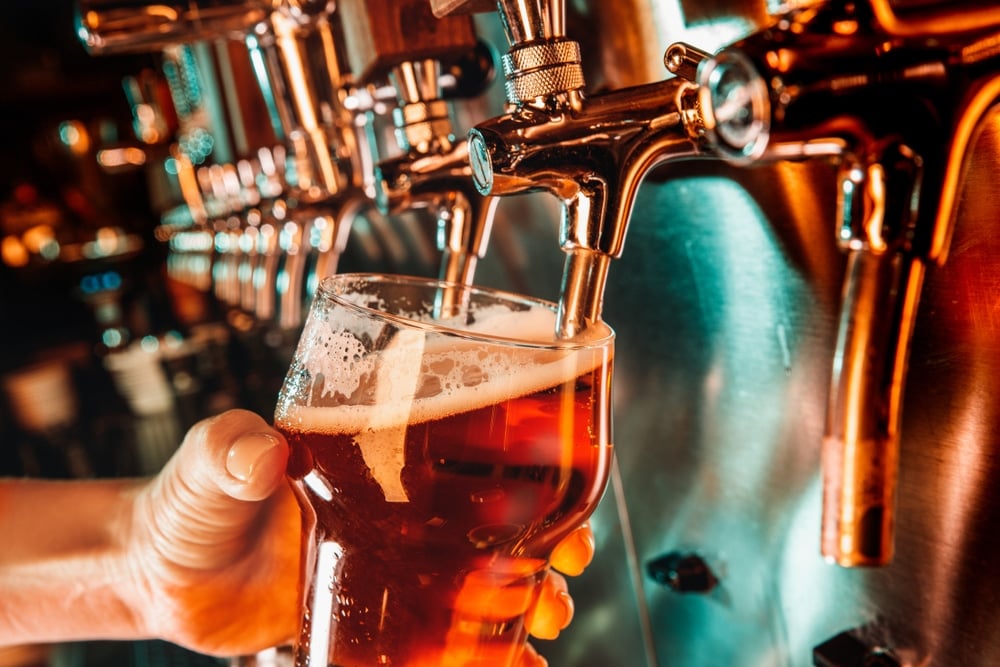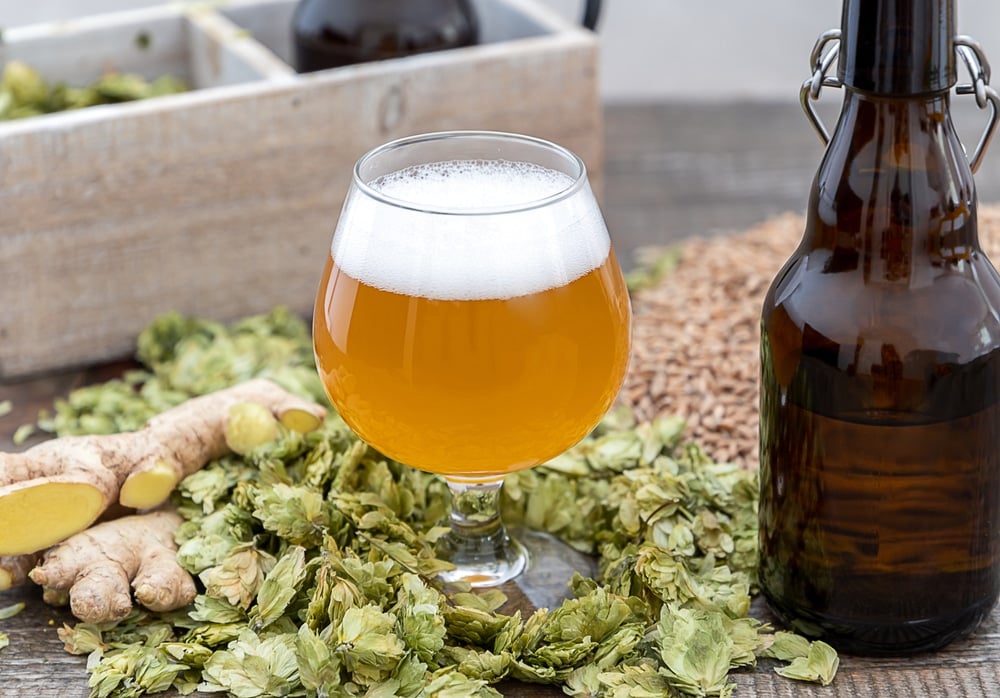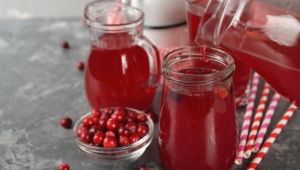Light Beer: Taste, 9 Best Brands + 3 Types

Light beer is a common drink in the U.S. that it might be the most recognizable kind of beer in the country. You’re probably familiar with many of the brands of light beer – Bud Light, Coors Light, and Miller Light being just three big names. Find out what light beer really is and which types you should definitely try.
The truth is: it probably isn’t what you think. Light beer may have had a bit of a bad reputation over the years, but they’re still responsible for almost 50 percent of beer consumption in the U.S. So what exactly is light beer? Let’s dive into it.
What Light Beer Is: Explained
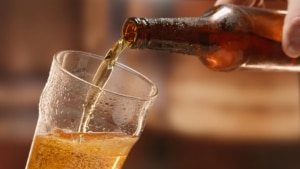
What Light Beer Is: Explained
The label “light beer” can actually relate to many different factors. It could be light on alcohol, carbs, calories, or even taste – as well as a combination of all of these. It will be lighter at least to a certain extent, depending on both your brand of choice and what you’re comparing it to.
However, there are multiple methods of producing light beer, and so this varies greatly. The Alcohol and Tobacco Tax and Trade Bureau (TTB) has a requirement that light beers have “a meaningful decrease in calories compared with a reference full-strength version.” Relevant details must also be displayed on the label and packaging.
One method brewers use is to lower fermentable sugars in the brewing process by destroying certain enzymes. This lowers both the calorie count and alcohol content. Another method literally dilutes regular beer down with water, which explains why people feel that light beers can taste “watery”. Whatever the method, most light beers contain fewer calories, as well as less alcohol.
Taste of Light Beer

Taste of Light Beer
Light beer, due to the use of less malted barley and usually fewer hops, has a tendency to be a very mild drink. Light beers tend to be lagers, which have a brighter and more mild taste than traditional ales. On the other hand, IPAs, the American Light Lager, has become synonymous with U.S. beer as a whole – for better and for worse.
Light beer is usually served very cold, which has a dulling effect on the flavor in addition to the removal of malt and hops. This means that light beer has a reputation for not tasting like much at all. While this is somewhat unfair, it’s worth noting that many brands of light beer are touted for their easy-drinking refreshment rather than their complex flavor profiles.
Ingredients in Light Beer
The ingredients in light beer are essentially the same as those in regular beer, which typically include water, malted barley, hops, and yeast.
However, light beer is brewed with a higher percentage of adjuncts, such as corn or rice, which are less expensive sources of fermentable sugars than malted barley. This results in a beer that is lower in calories and carbohydrates, with a lighter body and a less robust flavor.
Carbs: How Many Calories Light Beer Has
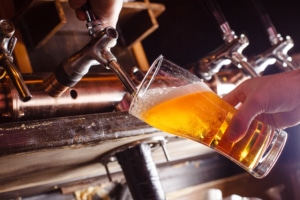
Carbs: How Many Calories Light Beer Has
How many carbohydrates – and thus, how many calories – are present in your beer depends on the brand and type of beer. It also depends on the method of brewing. However, it’s fair to say that light beers cut calories by a third in comparison to regular beer.
On average, a 12-ounce serving of regular beer contains about 150 – 180 calories, while a 12-ounce serving of light beer contains about 100 – 120 calories. Part of this is the reduction in carbohydrates by about the same amount. Part of it comes from the slightly lowered alcohol content, as alcohol contains calories on its own.
Amount of Alcohol in Light Beer
It is worth being aware that “light” doesn’t have a strict definition in terms of alcohol percentage. Indeed, the vast majority of the most popular domestic light beers in the U.S. have an ABV (alcohol by volume) of over 4 percent. This puts them safely into the realm of “regular” beers. For instance, if you compare the ABV of Pabst Blue Ribbon at 4.6 percent, and Bud Light at 4.2 percent, there’s not much difference there.
Rather, the big difference between light beers and their regular counterparts is the number of calories they contain, not the amount of alcohol. Just because a beer is labeled as “light” it doesn’t mean that excessive consumption would keep you below the limit. This is especially important to remember if you’re driving.
Types of Light Beer
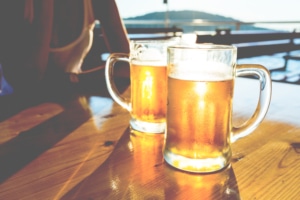
Types of Light Beer
If American Light Lager is the Ur-Example of light beer, does that mean that’s all light beers can possibly aspire to be? No, the world of light beer is more than that – though it can be harder to find other styles and types. This is because they’re not produced and marketed by huge beer conglomerates.
Increasingly, craft beer companies have been branching out into light beer production. It’s a smart choice – after all, that’s a large share of the market that the big-name brewers hold. Additionally, there’s a huge variety of different styles and types of light beer available for the consumer, no matter your taste.
Pale lagers
Pale lagers are essentially American Light Lagers, though there can be some distinct differences. Light beers which emerge from Europe tend to be pale lagers. However, they tend to have hoppier notes than American light beers. This is more than likely due to a difference in the taste of beer drinkers across the globe.
Pilsners
It’s hard to find a real pilsner amongst the light beers which call themselves pilsners. This is, in part, due to the fact that pilsners by nature are often light tasting (though contain around 5 percent alcohol). However, if you’re looking for something light on calories while still maintaining a hefty helping of hops, you may find yourself searching for a while.
Light ales
It might come as a surprise that light ales have been becoming more popular. However, light ales are not often as light on calories as either lagers or pilsners. Despite this, they are still a flavorful alternative to higher-alcohol beers – which may account for their rising popularity.
Best Light Beer: Top 9 Brands
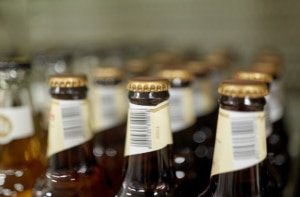
Best Light Beer: Top 9 Brands
Light beer has a reputation for all tasting pretty much the same – especially the brands put out by big brewing companies. However, there is a definite shift towards creating light beers that taste similar to their full-alcohol, higher carbohydrate offerings.
Imported beers in particular are definitely leading the way on this front. Meanwhile, domestic light beers are more often a specific brand.
Bud Light
Bud Light is probably the light beer that has the most name recognition, and certainly the light beer that offers the most variation. Along with flavor additions like Bud Light Lime, and Bud Light Orange, there is Bud Light Platinum – which has an ABV of 6 percent, making it possibly the only strong light beer out there. For comparison, Bud Light is 4.2 percent, and Budweiser is 5 percent.
In comparison to other light beers from Anheuser-Busch InBev, Bud Light is probably the light beer with the most distinctive flavor. It has an understandably less complex flavor profile than regular Budweiser. However, the taste is slightly sweeter and the beer is slightly more carbonated.
Natural Light

Natural Light
Natty Light is neither particularly glamorous nor a fabulous beer. It’s famously been mistreated in popular culture, and often finds itself the butt of many jokes. However, this is rather unfounded and there’s more than a hint of snobbery toward the brand.
Natural Light was first introduced in 1977 and quickly gained popularity among young adults. This was due to its affordability and accessibility. The beer is brewed with a combination of malted barley, corn, and water, and is lightly hopped to give it a mild, refreshing taste.
With an ABV of 4.2 percent, Natty Light isn’t actually all that light in terms of alcohol content. This is another reason it’s popular with college students, in fact. However, it is light in carbs, with each 12-ounce serving containing around 95 calories.
Coors Light
Coors Light was first introduced in 1978 and quickly became one of the most popular beers in the U.S. This was particularly true amongst consumers who were looking for a lighter, easier-to-drink alternative to traditional beers. The beer is brewed with a combination of malted barley, corn, and rice, and is lightly hopped to give it a mild, refreshing taste.
In recent years, Coors Light has become known for its marketing campaigns. These have emphasized the beer’s coldness and refreshing qualities, along with its association with sports and the outdoors. Although, again – Coors Light has an ABV of 4.2 percent (Coors Original is 5 percent), so it’s not something you’d want to drink before exercise.
Busch Light
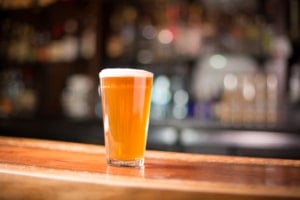
Busch Light
If you’re wondering what the difference is between Natty Light, Busch Light, and Michelob Ultra Light, we can tell you it’s 0.1 percent. That is, Busch Light has an ABV of 4.1 percent. Really, that’s not a huge difference in alcohol content, when you look at it.
Busch Light has a solid fanbase. In fact, the brewery Anheuser-Busch InBev targets this beer towards the same crowd for whom Coors Light is also a drink of choice. It has a similar flavor profile, stronger than that of Natural Light.
Michelob Ultra Light
If you’re looking for the reason people raise an eyebrow at light beers in the U.S., this might be where the problem lies. It’s not with Michelob Ultra itself, we hasten to add. The drink is a crisp, refreshing light lager with a mild profile, and 4.2 percent ABV.
The issue is that, like Natty Light and Busch Light, Michelob Ultra is a product of Anheuser-Busch InBev. Their flavor profile could describe either of the two other beers. It’s described as slightly more carbonated than either of the other two and slotting between Busch and Natty in terms of flavor intensity. However, it is so close to the other two that the difference only lies in marketing.
Amstel Light
Amstel Light is one of the exceptions to the “light on calories, not on alcohol” tenet. Brewed in the Netherlands, Amstel Light is similar to other European light beers. Its ABV sits at 3.5 percent, whereas Amstel’s regular counterpart is 5 percent. A refreshing lager with a malty taste to it, Amstel Light is one of the best options if you want a drink in the afternoon while keeping your wits about you in the evening.
Yuengling Light Lager
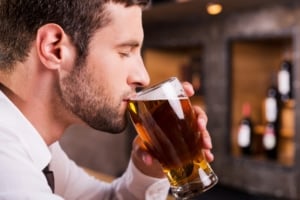
Yuengling Light Lager
Yuengling Light Lager (YLL) is an outlier on this list for a couple of reasons – it’s not produced by a massive brewery chain, and it’s a U.S. beer under 4 percent ABV. YLL is produced by the D.G. Yuengling & Son brewery, which is the oldest operating brewery in the United States, and it’s 3.8 percent. An amber lager, YLL is a light version of the pre-prohibition beer that has become synonymous with American lager – crisp, cold, and refreshing.
Corona Light and Corona Premier
This is a two-in-one combination as Corona has come out with two very similar light beers. Given Corona already has a reputation for a beer with a light, clean taste, really the only thing Corona Light and Corona Premier need to do is taste good with a slice of lime.
Premier has a slightly drier finish, and Light has a slightly more citrusy aftertaste. Both beers are 4 percent ABV, while Corona Extra is 4.6 percent (so could possibly qualify as a light beer in its own right).
Heineken Light
Heineken Light, much like Amstel, is a light beer that is actually light on alcohol as well as carbs and calories. Coming in at 3.3 percent ABV (where regular Heineken is 5 percent), Heineken Light has a noticeable drop in alcohol.
It also eschews the mild, less complex flavors typical of light beer in favor of giving the beer some hoppiness. This means it tastes closer to a regular beer while being the lightest beer we’ve talked about here.
Alternatives to Light Beer

Alternatives to Light Beer
Light beer isn’t for everyone, even if the number of brands on the shelves might make you think it is. With many people turning to microbrews and experimenting with different kinds of beers, the homogenous nature of a lot of light beers can become a bit of a turn-off.
If you’re just not that much of a fan (or even if you are, but feel like branching out) there are plenty of other things you could be drinking.
Regular Beer
This is the obvious choice, we must admit. Particularly if you’re into porters and other dark beers, you’re not often going to find a low-alcohol version of those (a “light” dark beer does seem like an oxymoron). The other reason you might opt for regular beer over light beer is simply that you prefer the taste, and there’s not a huge difference in alcohol content when you’re talking about domestic beer.
Hard Seltzer
Hard seltzer has grown in popularity over the last few years, mirroring the growth in flavored seltzer water in general. The majority of hard seltzers are brewed in a similar fashion to beer. Having said that, there are plenty of premixed vodka seltzers which have lower calories and less sugar than other vodka premixes.
Hard seltzer is a solid option to take if you’re looking for something which doesn’t taste like beer. It is, however, similar to light beer in terms of calories and carbohydrates. In terms of alcohol content, though, it’s more similar to regular beer.
Alcohol-Free beer

Alcohol-Free beer
There is often an assumption that if you’re drinking beer, you’re doing it to get drunk rather than because you enjoy the taste. Unfortunately, no or low-alcohol beer hasn’t been all that great in the past.
However, this is changing as microbreweries get in on the act of trying to create a beer that tastes great with no alcohol. And if you look overseas, even big breweries like Heineken and Becks are producing alcohol-free beers which taste pretty close to their standard offerings.
Here you get more information about ginger beer.
Gluten-Free beer
For many, gluten is a real problem in both food and drink. Even if you aren’t coeliac, gluten intolerance can make you feel very unwell. And if you’ve figured out that the illness you feel after drinking beer isn’t just because of a hangover, you might want to switch out light beer for gluten-free beer.
Instead of traditional grains, gluten-free beer is made using alternative grains or other fermentable substances that are gluten-free. This includes sorghum, millet, corn, rice, quinoa, or buckwheat.
However, since gluten-free grains do not have the same enzymes as barley or wheat, brewers usually add enzymes to help break down the starches and convert them into fermentable sugars. The brewing process then proceeds as usual, with the addition of hops and yeast.
Gluten-free beer can come in different styles. This includes lagers, ales, stouts, or IPAs. They can have different flavors and aromas depending on the type of grains and other ingredients used. They also have different alcohol and calorie contents, so gluten-free beer isn’t strictly a light beer substitute.

